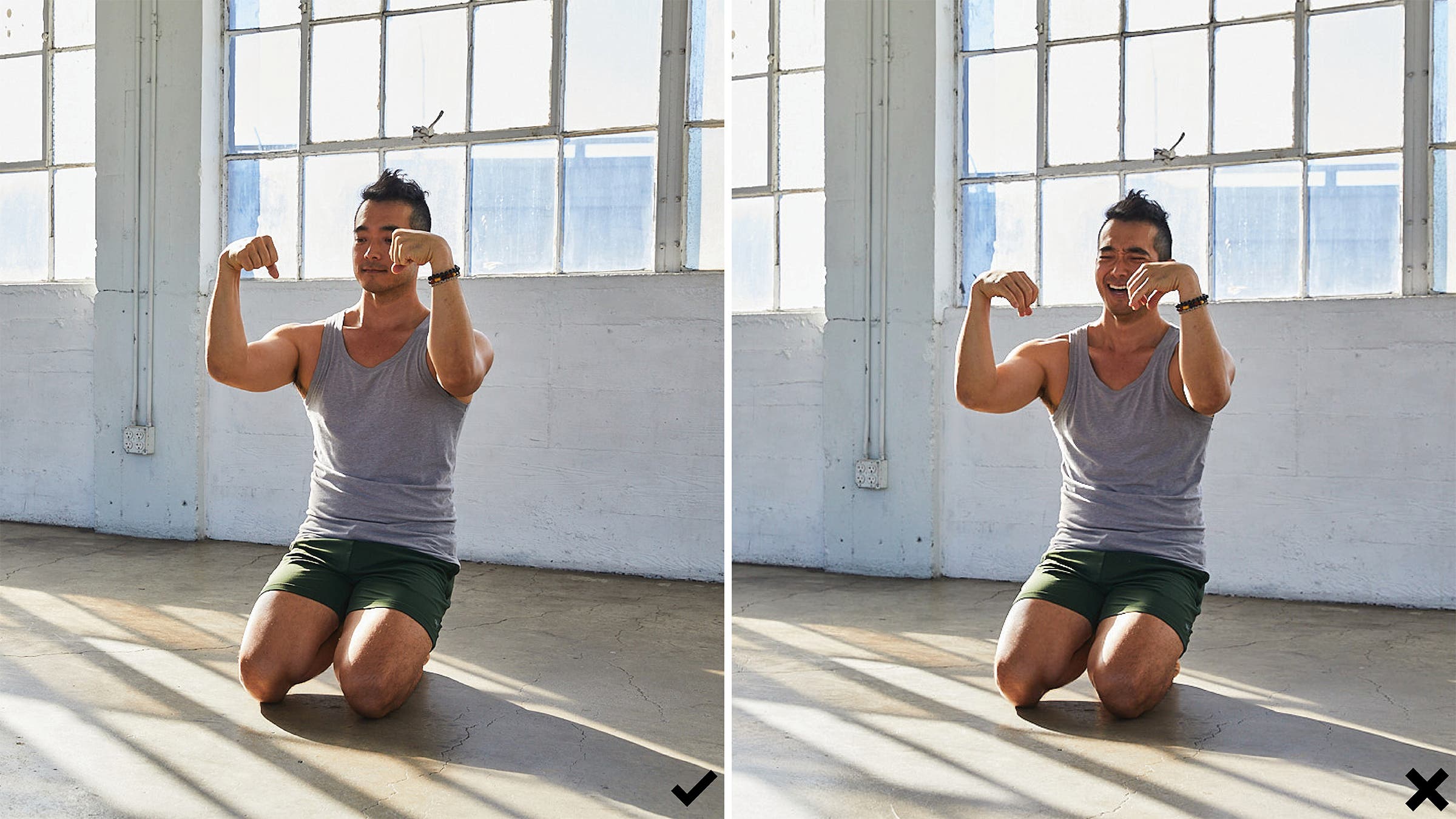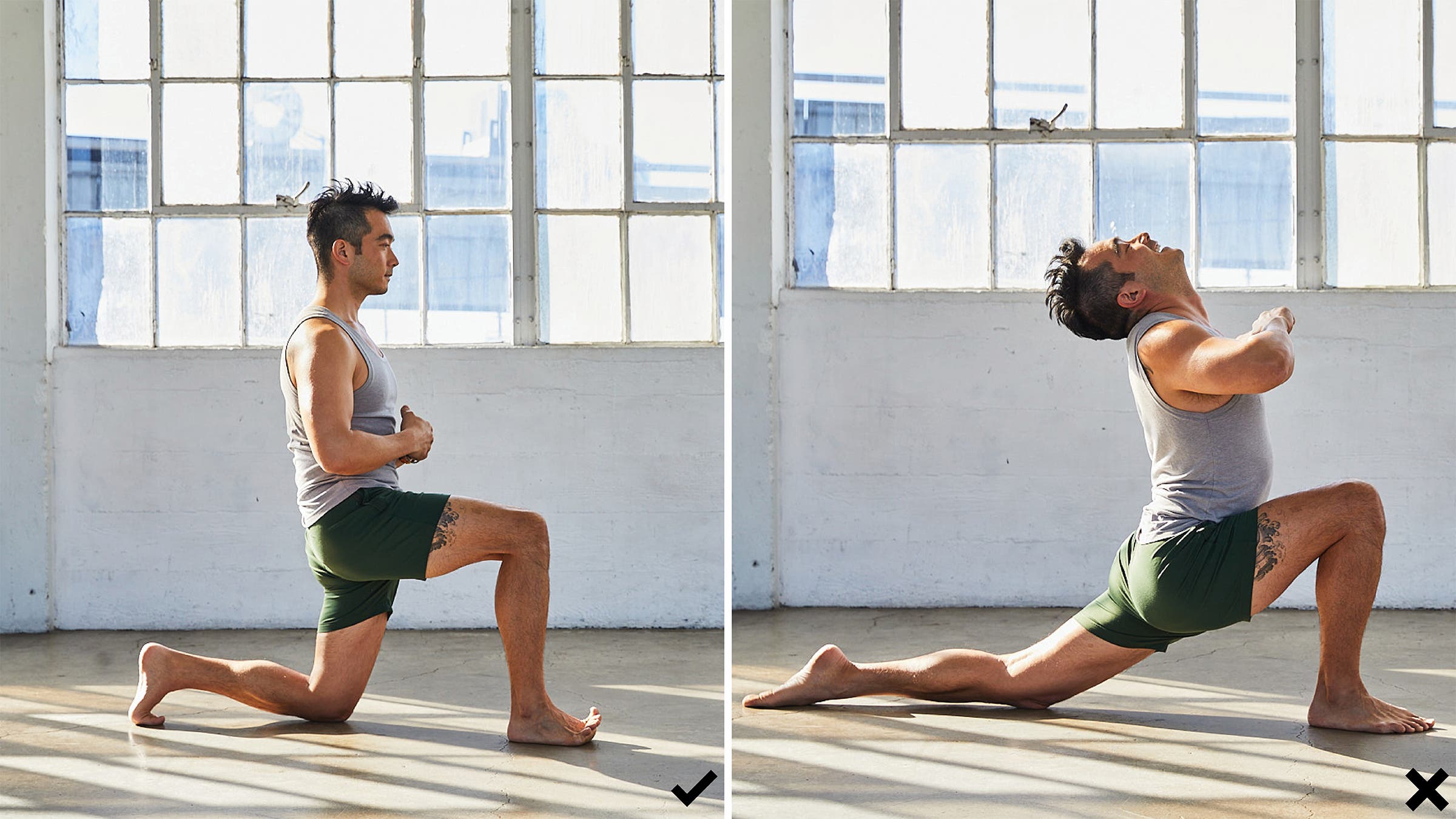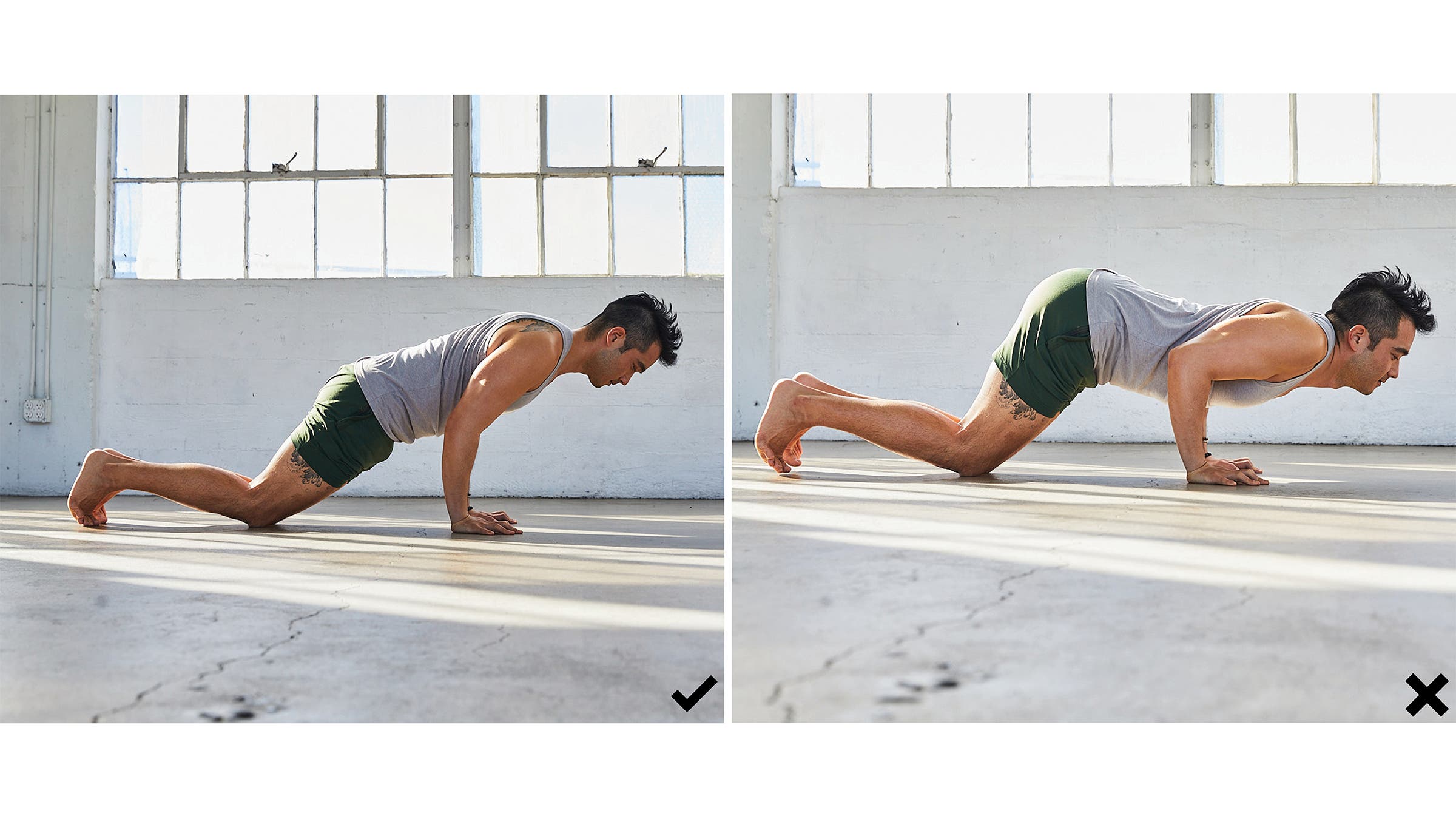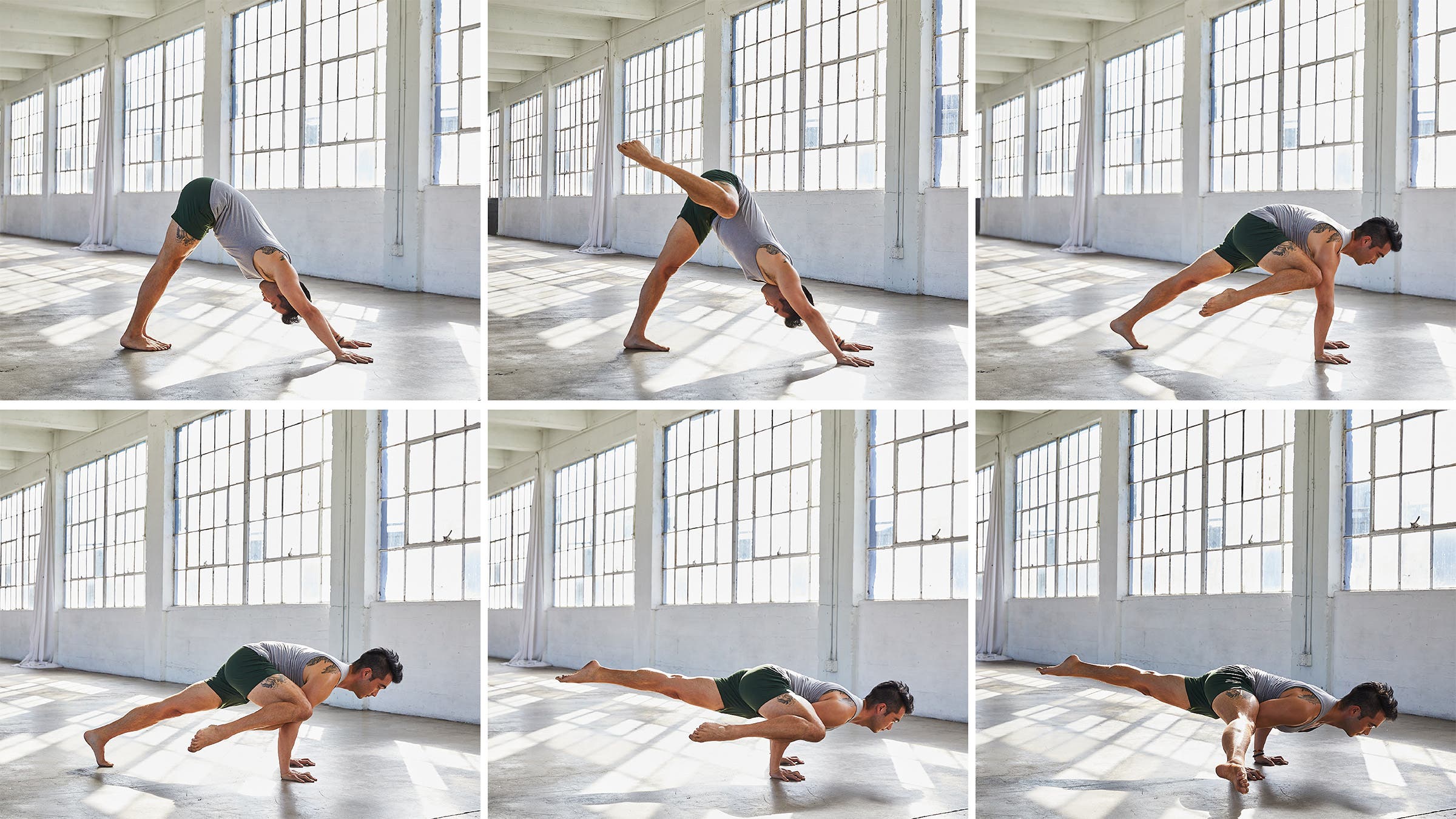What You Need to Know to Come Into Eka Pada Koundinyasana

Skip to...
Yoga teacher Hiro Landazuri has dedicated years to creating a style of yoga that enhances the experience through a nuanced understanding of anatomy. We asked him to share his approachable manner to teaching poses, which builds up to a challenge by incorporating prep exercises to help you feel various components of the pose before you attempt to put it all together in a single pose. Here’s his empowering take on Eka Pada Koundinyasana, which makes it—or a variation of it—doable wherever you are in your practice.
When you practice yoga, the actual pose you’re attempting, such as an arm balance like Eka Pada Koundinyasana, doesn’t matter. It’s practice for life. Challenging poses allow you to try something that’s outside of what’s comfortable. They help you learn to step into fear. They let you practice how to be more confident. The fear of trying something is always going to be there until you actually attempt that thing.
The asymmetrical aspect of Eka Pada Koundinyasana is interesting because it brings an element of coordination to the arm balance. In yoga, a lot of people misjudge whether they can do something, or not, based on their perceived strength and flexibility. It’s actually about their coordination. I like to approach the pose by breaking it into individual areas of the body, which enhances an understanding of which muscles you need to engage and how.
See also: Hiro Landazuri explains why yoga’s not about the shape of the pose
7 tips for practicing Eka Pada Koundinyasana
Arms
Instead of trying to create a 90-degree angle in your arms, you want to emphasize pushing the ground away as much as possible. This engages the pectoralis muscles, anterior deltoids, and the serratus anterior, which is your “punching muscle.” Those muscles are integral to providing stability and strength so you can hold yourself up in the posture. They also assist you in getting in and out of the posture safely.
Chest and Shoulders
Think about pushing or lifting the spine higher than your shoulder blades or trying to lift your chest farther away from the ground. This is shoulder protraction, or what I call scapular or shoulder pushes. It’s essential in most arm balances.
Hips
Eka Pada Koundinyasana requires an element of hip flexion and also hip abduction. Doing exercises that emphasize trying to tap your knee to your elbow is essential as it mimics what happens in the pose. You’ll feel how much hip flexion you need and also feel how much is necessary to open your leg out to the side. If touching your knee to your elbow is challenging, practice other hip-extension stretches, such as Utthan Pristhasana (Lizard Pose), to build more hip mobility.
Back
A common misalignment in this pose is coming into a slight backbend. Tight hips are usually the source of this problem, which means instead of lifting and fully extending your back leg, you arch your back. To counter this, push the ground away from you in shoulder protraction.
Legs and Glutes
Another common thing that happens is you become so concerned with the knee that’s balancing on your arm, you forget about your back leg. You need to squeeze the lateral (outer) glutes of your back leg so that leg remains straight behind you and doesn’t swing out to the side.
Abs
Draw your navel higher, toward the ceiling. That’s most of your stability right there, along with pushing the ground away and lifting your spine higher than your shoulder blades. This usually falls into place if everything else is engaged.
Balance
The very last piece is finding your balance point while you’re in the pose. You can’t really intellectualize that. It’s something that comes with experience. I find that it’s dictated by trying to squeeze the glutes of your back leg and using your fingertips as brakes. Digging in with your fingertips helps you keep your head up and away from the ground. It’s a seesaw balance.
About our contributor
Hiro Landazuri is the founder of Body Smart Yoga. He empowers others with the necessary tools to grow into their ideal selves. He regularly teaches in-person and online workshops and shares teaching videos on Instagram at @actionhiro.
The Prep Exercises
I find that it really helps to show common misalignments in poses so students can recognize and correct them.
Fire Hydrant
Start on hands and knees in Tabletop with shoulders over wrists. Lift your right knee to the side and stay here for several breaths. Repeat on the other side.
For more sensation in Fire Hydrant, bring your knee to the same-side triceps, hold it there, and work on scapular pushes (lifting your spine above your shoulder blades).
Modified Half Frog
From Tabletop, lower to your belly and extend your legs behind you. Bring your elbows slightly in front of your shoulders and come onto your forearms, similar to Sphinx Pose. Bend your right knee and slide it out to the side any amount. Press your knee into the ground. Repeat on the other side. This mimics the engagement you will feel in your knee in Eka Pada Koundinyasana.

Wrist Flexor Curls
From kneeling or sitting, bring your arms in front of you with your elbows bent and your forearms facing each other. Clench your fists and curl your hands down toward your inner wrists, then release and bring your hands upright. Repeat several times. This trains your brain to engage only the wrist flexors, which are underused in everyday life. It also mimics the action in arm balances.

Anjaneyasana (Low Lunge)
From kneeling, bring your right foot forward into a Low Lunge, taking a slightly shortened stance. Really squeeze the glutes of your back leg. To intensify the stretch, inch your back knee farther away and bend more deeply into the front knee. Repeat on the other side. This makes it easier to extend your back leg straight behind you.
Standing Hip to Knee
From standing, bring your arms in front of you and bend your elbows. Turn your palms to face away from you, flex at your wrists, and draw your elbows toward your sides, as if you were in Chaturanga. Lift one knee out to the side and try to touch the same-side elbow and hold. Repeat on the other side. This mimics the sensation of Eka Pada Koundinyasana but without the weight on your shoulders.
Avoid bending your side to bring your elbow to your knee, a common misalignment due to tight hip flexors. Instead, keep your body straight as you lift your knee until you feel a stretch in your hip.
For more stability in Standing Hip to Knee, stand with your hands against a wall for balance. Try to touch your knee to your elbow.

Half Chaturanga
Come to Plank Pose, lower your knees, and bend your elbows to come into Half Chaturanga. Keep your elbows over your wrists and drawn in toward your sides. Try to lift your spine above your shoulder blades in a scapular push. This replicates the lift you need to feel in your chest and back when you balance in Eka Pada Koundinyasana.
Half Chaturanga Leg Extension
From Half Chaturanga, extend one leg straight behind you, engaging the glutes. This is the same action you’ll take with your back leg during Eka Pada Koundinyasana. Work on scapular pushing while you lift your back knee and put it down. Try to keep your back leg straight. Repeat several times, then switch to the other side. This exercise practices the coordination of upper-body strength and back-leg hip extension.

How to come into Eka Pada Koundinyasana (Hurdler’s Pose)
Start in Adho Mukha Svanasana (Downward-Facing Dog Pose). Inhale as you lift one leg and bend your knee out to the side. Exhale and shift your shoulders forward over your wrists, as in Plank Pose, and bring your bent knee to the same-side triceps. Push your knee or inner thigh into your upper arm. Keep your back foot on the ground for support and really engage and straighten that leg. Start to bend your elbows and draw them in toward your sides. Press through your back toes and start to engage the glutes of your back leg.
If you’re a beginner, keep your back foot or knee down and work on engaging your core and holding your knee to the triceps.
Slowly shift your weight forward and press down through your fingertips as you lift your back foot off the ground. As you lean forward, continue to engage the glutes of your back leg and push through your fingertips. Find your balance. If it’s accessible to you, straighten your bent knee. Breathe here.
To easily exit the pose, simply lower your back foot or back knee to the ground.
For more of a challenge, start in Chaturanga Dandasana and slowly lean forward as you bring your bent knee to the same-side triceps. This utilizes less momentum and requires more strength.
Common misalignments in Eka Pada Koundinyasana
A couple things that I often see in Eka Pada Koundinyasana:
Your chest and face drop too close to the ground. To counteract this, really exaggerate pushing the ground away with your hands to create some lift in your chest. It helps to practice scapular pushes so you’re familiar with lifting the spine a little higher than the shoulders. If you feel yourself backbending, engage your abdominal muscles.
Your opposite shoulder drops too low to the ground. In Eka Pada Koundinyasana (and any asymmetric arm balance), the shoulder opposite the forward leg will often drop down too low. Try looking straight down instead of over toward your front leg, because if you’re looking off to the side, your chest (and opposite shoulder) will follow.
You will fall out of the pose. And this isn’t a bad thing. It means you’re trying.
Failure is necessary for success. It might be a good—or necessary—thing to face-plant every once in a while...gracefully!
Hiro Landazuri is the founder of Body Smart Yoga. He empowers others with the necessary tools to grow into their ideal selves. He regularly teaches in-person and online workshops and shares teaching videos on Instagram.